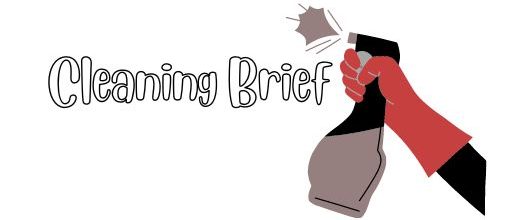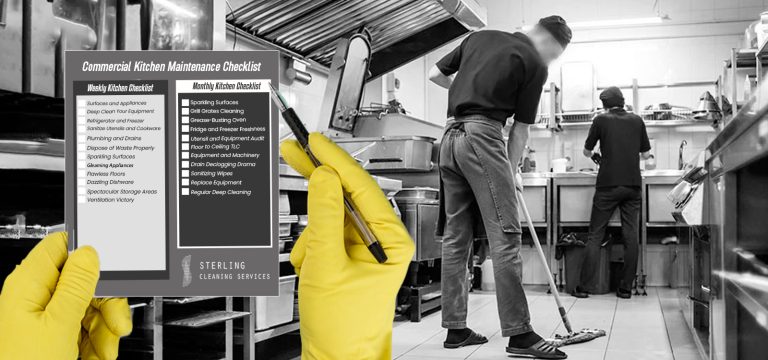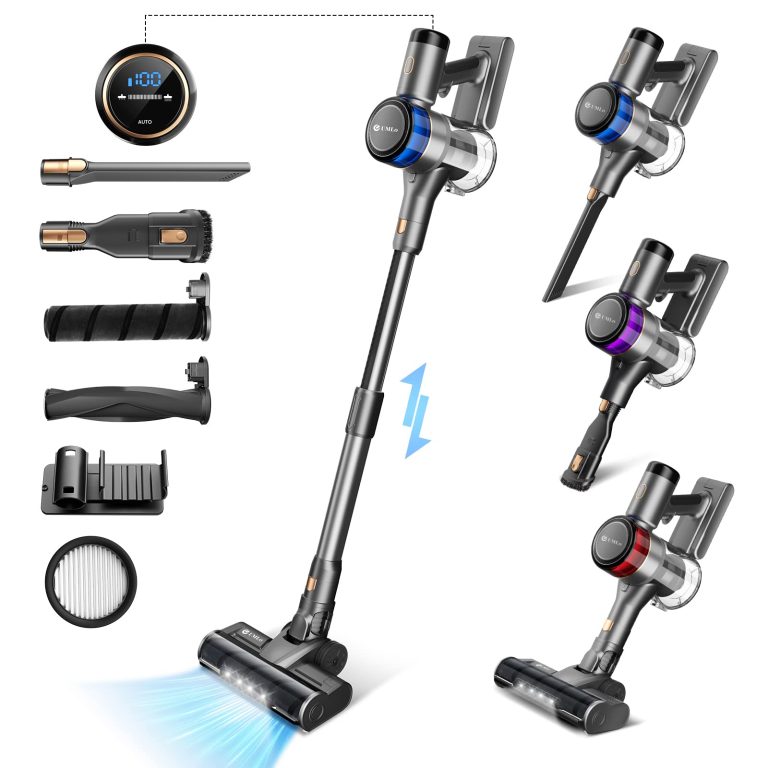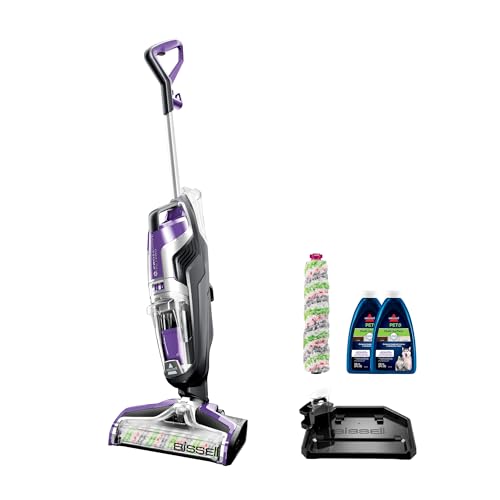How to Deep Clean and Revitalize Your Basement Floor
To clean a basement floor, remove any loose debris and sweep the area thoroughly. Then, mop the floor using a mixture of warm water and a mild detergent or floor cleaner, making sure to scrub any stubborn stains or dirt.

Credit: www.amazon.com
Preparation And Planning
When cleaning a basement floor, proper preparation and planning are essential. Begin by removing all objects from the area and sweeping or vacuuming the floor to remove debris. Next, use a suitable cleaner and scrub brush to effectively clean the surface, and ensure the area is well-ventilated during the process.
Clearing Out The Space
Before you begin cleaning your basement floor, it’s essential to clear out the space to ensure optimal cleaning conditions. Remove any furniture, boxes, or other items that may obstruct your cleaning process. Additionally, sweep or vacuum the floor to eliminate loose dirt and debris. By clearing out the space beforehand, you’ll have a clean slate to work with and better access to all areas of the floor.
Inspecting For Damage
Once the area is clear, inspect the basement floor for any signs of damage. Look for cracks, mold, or areas of excessive moisture. These issues should be addressed before you proceed with the cleaning process. If you notice any cracks, consider filling them with an appropriate sealant to prevent further damage. If you spot mold or excessive moisture, it may be necessary to consult a professional to resolve the issue before continuing with cleaning.
To inspect the floor carefully, divide it into smaller sections and examine each part systematically. This approach ensures that no potential damage goes unnoticed, allowing you to take the appropriate action.
Tip: If you’re uncertain about the severity of the damage or unsure about how to handle it, consulting a professional can provide the expertise needed for a thorough inspection and repair.
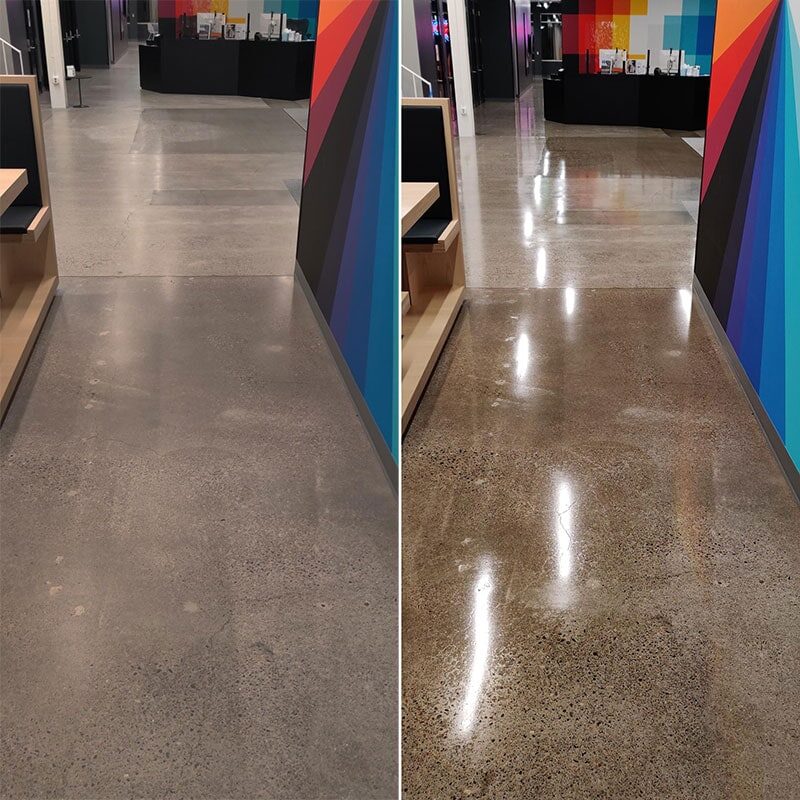
Credit: corporatecare.com
Cleaning And Deodorizing
Learn how to effectively clean and deodorize your basement floor with these expert tips and techniques. Say goodbye to dirt, stains, and unpleasant odors for a fresh and inviting space.
Cleaning and deodorizing your basement floor is essential to maintain a fresh and hygienic living space. Whether you use your basement for storage, laundry, or as a living area, it’s important to keep it clean and odor-free. In this section, we will discuss effective methods for removing stains and spills, as well as choosing the right cleaning products to tackle the grime and eliminate any unpleasant odors.Removing Stains And Spills
Stains and spills on your basement floor can be unsightly and difficult to remove. Luckily, there are simple solutions to tackle these common issues. Here are some effective methods to help you get rid of stains and spills:- Act quickly: When a spill occurs, it’s important to address it as soon as possible to prevent it from becoming a stubborn stain. Use a clean cloth or paper towels to blot up the spill, avoiding any rubbing or smearing.
- Pre-treat the stain: For tough stains like oil or grease, it’s helpful to pre-treat the area before cleaning. Apply a specialized stain remover or a mixture of baking soda and water directly to the stain. Let it sit for a few minutes to loosen the stain.
- Scrub gently: Use a soft-bristle brush or a sponge to gently scrub the stained area. Avoid using abrasive materials that may damage your basement floor. Work in circular motions to lift the stain without spreading it further.
- Rinse thoroughly: After scrubbing, rinse the area with clean water to remove any residue. Use a mop, bucket, or hose to ensure all cleaning products are thoroughly rinsed away.
- Dry completely: Once you have removed the stain, it’s essential to allow the floor to dry completely. Open windows or use fans to improve air circulation and expedite the drying process. This will help prevent mold and mildew growth.
Choosing The Right Cleaning Products
Using the right cleaning products is crucial to effectively clean and deodorize your basement floor. Here are some factors to consider when choosing the right cleaning products:- Surface type: Different basement floor surfaces, such as concrete, tile, or laminate, may require specific cleaning products. Consult the manufacturer’s recommendations or seek advice from a professional to ensure you select the appropriate products.
- Stain-specific solutions: For certain types of stains, such as pet urine or mildew, there are specialized cleaners available. These products are formulated to combat specific odors and stains, providing targeted cleaning power.
- Eco-friendly options: If you prefer to use environmentally-friendly cleaning products, look for options labeled as biodegradable or non-toxic. These products are safer for your health and the environment while still effectively cleaning your basement floor.
- Avoid harsh chemicals: Harsh chemicals can damage your basement floor and emit strong fumes. Opt for milder cleaning solutions that are specifically designed for the type of flooring you have. Always read the labels and follow the instructions for safe and effective use.
Repairing And Restoring
Discover the secrets to effectively cleaning and restoring your basement floor with our expert tips and tricks. Say goodbye to dirt, grime, and stains as we guide you through the process of achieving a spotless and refreshed basement.
Repairing and Restoring Basement floors are often subject to wear and tear, which can result in cracks, gaps, and overall deterioration. Proper repair and restoration are crucial steps in maintaining a clean and functional basement floor. By addressing these issues, you can not only improve the aesthetics of the space but also prevent further damage and potential hazards. This section will guide you through the essential processes of filling cracks and gaps as well as applying sealant or waterproofing. “`htmlFilling Cracks And Gaps
“` When it comes to filling cracks and gaps in a basement floor, it’s essential to start with thorough cleaning. Use a brush and vacuum to remove any dirt, debris, and loose particles from the affected areas. Next, fill the gaps with an appropriate concrete patching compound, ensuring that it is level with the surrounding floor surface. Allow the compound to cure as per the manufacturer’s instructions, and then smooth the area with sandpaper if necessary. “`htmlApplying Sealant Or Waterproofing
“` After repairing any cracks and gaps, it’s important to apply sealant or waterproofing to protect the basement floor from moisture and potential damage. Choose a high-quality concrete sealant or waterproofing product suitable for basement use. Thoroughly clean the floor to ensure proper adhesion, then apply the sealant according to the manufacturer’s guidelines. Use a brush or roller to ensure even coverage, and allow sufficient drying time before exposing the floor to regular foot traffic or any heavy items. By following these steps for repairing and restoring your basement floor, you can effectively address common issues and prolong the life of the surface. Maintain a clean and well-protected basement floor to enhance the overall functionality and appeal of your home.
Credit: www.rejuvenateproducts.com
Revitalizing With Finishing Touches
Once you have cleaned and prepared your basement floor, it’s time to add the finishing touches that will bring new life to the space. Revitalize the look of your basement by considering these simple yet impactful ideas:
Adding A Fresh Coat Of Paint
A fresh coat of paint can do wonders in revitalizing your basement floor. Not only does it enhance the overall appearance, but it also helps protect the surface from damage and wear. Follow these steps to make your basement floor paint application a breeze:
- Thoroughly clean the floor surface to ensure there is no dirt or debris.
- Repair any cracks or imperfections using a suitable floor patching compound.
- Apply a concrete primer to promote good adhesion and prevent peeling.
- Choose a quality concrete paint that is specifically designed for high-traffic areas.
- Using a paint roller or brush, evenly apply the first coat of paint. Let it dry completely.
- Apply a second coat of paint for a more durable and long-lasting finish.
- Allow the paint to cure according to the manufacturer’s instructions before placing any furniture or heavy objects on the floor.
Enhancing With Area Rugs Or Mats
Another way to give your basement floor a fresh look is by adding area rugs or mats. These not only provide a comfortable and inviting feel but also protect the floor from scratches and stains. Consider these tips when selecting and placing area rugs or mats:
- Measure the size of the area you want to cover to ensure the rug or mat fits appropriately.
- Choose a rug or mat that complements the overall style and color scheme of your basement.
- Opt for materials that are easy to clean and maintain, especially in a high-traffic area.
- If you have concrete floors, consider using rug pads to prevent slipping and add extra cushioning.
- Strategically place rugs or mats in areas where you want to define specific zones or create a cozy atmosphere.
By adding a fresh coat of paint and enhancing with area rugs or mats, you can transform your basement floor into a more visually appealing and functional space. These finishing touches not only breathe new life into your basement but also contribute to the overall ambiance and comfort of the room.
Maintenance And Long-term Care
Maintaining a clean basement floor is crucial for long-term care and preventing mold and mildew. Regularly sweep and mop the floor with a detergent solution to remove dirt and stains. For tougher stains, use a scrub brush and specialized cleaner to ensure a thorough cleaning.
Maintenance and Long-Term Care Creating a Regular Cleaning Schedule To keep your basement floor clean and spotless, it’s essential to establish a regular cleaning schedule. By doing so, you can prevent dirt and grime from building up and make the cleaning process easier. By incorporating a cleaning routine into your weekly or monthly schedule, you can stay on top of the maintenance and keep your basement floor looking its best. Here’s an example of a regular cleaning schedule you can follow: 1. Sweep or vacuum: Start by removing loose dirt and debris from the floor using a broom or vacuum cleaner. Pay close attention to corners and hard-to-reach areas where dirt tends to accumulate. 2. Dust and mop: Next, dampen a mop with a mild floor cleaner diluted in water and proceed to mop the entire basement floor. Be sure to wring out the mop well to avoid excess water on the floor. This will help remove any remaining dirt and grime. 3. Scrub stubborn stains: If you encounter stubborn stains on the basement floor, you may need to use a floor scrubber or a scrub brush to tackle them. Apply a suitable floor cleaner directly to the stains and scrub gently until they are lifted. 4. Rinse and dry: Once you have thoroughly cleaned the floor, it’s crucial to rinse away any remaining cleaner residue. Use a mop or clean damp cloth to remove the cleaning solution. To allow the floor to dry completely, open windows for ventilation or use fans to circulate air in the basement. Monitoring for Moisture and Mold Moisture and mold are common problems in basements, as they thrive in damp environments. Regularly monitoring for moisture and mold can help prevent these issues from occurring and avoid potential health risks. Here are a few tips for monitoring moisture and mold in your basement: 1. Inspect for leaks: Periodically check your basement for any signs of water leaks or damp spots. Look for water stains, peeling paint, or a musty odor, as these indicate a moisture problem. 2. Control humidity levels: Keep the humidity levels in your basement in check by using a dehumidifier. Aim for a humidity level of around 50% to discourage mold growth. 3. Improve ventilation: Proper airflow is crucial in preventing moisture buildup. Ensure that your basement is adequately ventilated by opening windows, using fans, or installing a ventilation system if necessary. 4. Address potential sources of moisture: Identify and address any potential sources of moisture, such as leaky pipes or faulty plumbing. Fixing these issues promptly can help prevent mold and moisture problems. By incorporating these maintenance tips into your long-term care routine, you can ensure a clean and healthy basement floor for years to come. With a regular cleaning schedule and diligent monitoring for moisture and mold, you can maintain a welcoming and functional basement space.Frequently Asked Questions Of How To Clean A Basement Floor
How Often Should I Clean My Basement Floor?
It is recommended to clean your basement floor at least once every 2 to 3 months. Regular cleaning helps prevent the buildup of dirt, dust, and debris, keeping your basement clean and fresh.
What Cleaning Products Should I Use For My Basement Floor?
For a concrete basement floor, use a pH-neutral cleaner specifically designed for concrete surfaces. Avoid using harsh chemical cleaners as they can damage the floor’s surface. Make sure to follow the manufacturer’s instructions for the best results.
How Do I Remove Stains From My Basement Floor?
To remove stains from your basement floor, start by identifying the type of stain. For oil-based stains, use a degreaser or a mixture of warm water and dish soap. For other stains, such as rust or mold, there are specific cleaners available.
Follow the instructions carefully and scrub gently with a brush.
Can I Use A Pressure Washer To Clean My Basement Floor?
Yes, you can use a pressure washer to clean your basement floor. However, it is important to use the appropriate pressure setting and attachment to prevent damage to the floor. Keep in mind that excessive pressure or using the wrong attachment can cause cracks or other issues.
Conclusion
Maintaining a clean basement floor is essential for a healthy and safe home environment. By following the guidelines provided in this blog post, you can effectively remove dirt, stains, and moisture from your basement floor. With regular maintenance and proper cleaning techniques, you can ensure a clean and inviting space for your family and guests.
